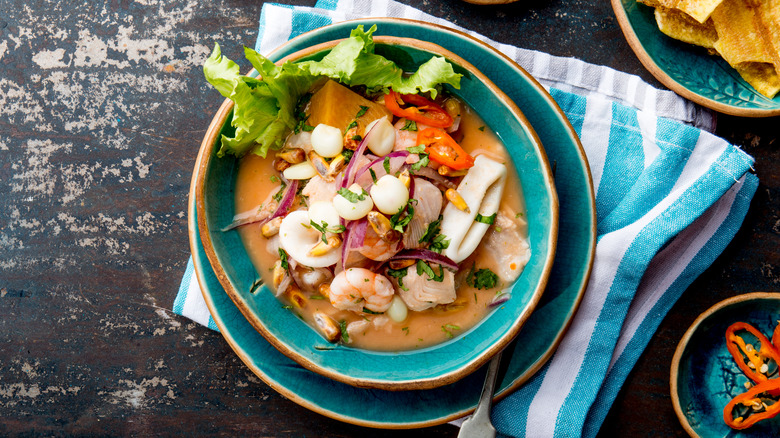What's The Difference Between Ceviche And Tiradito?
Eating raw meat and fish is popular in cultures around the world, from sushi and sashimi in Japan to carpaccio in Italy, not to mention the famous high-end tartare. But the South American preparations of ceviche and tiradito are among the most flavorful. While these two dishes are closely linked and often found together on menus in Peru and other nearby countries, there are also some important differences to remember.
Both are made of uncooked fish or seafood and take their distinctive flavor from a citrus-based acidic marinade that may also include peppers, tomatoes, onions, garlic, and a variety of other flavorings and spices. But the primary differences between ceviche and tiradito come down to two things — how the fish is cut and how long it sits in the delicious sauce before being served. These subtle alterations can make a surprisingly significant impact on the final product.
The key is in the preparation
Generally speaking, ceviche is made with cubed chunks of raw fish, while tiradito uses slices instead, much like the sashimi of Japanese cuisine. This isn't just a coincidence — Peru is home to what's known as Nikkei cuisine, a Japanese-Latin fusion that was developed by Japanese immigrants who originally came to work on plantations.
In addition, ceviche sits in the acidic sauce for an extended period, which denatures the protein, a process similar to cooking with heat. On the other hand, tiradito is covered with sauce shortly before serving, acting more as a dressing and flavoring than a cooking mechanism. Times vary for both but can range from a few minutes to a few hours for ceviche, while tiradito only gets a brief marination or is sometimes served immediately after dressing.
Feeling hungry? Making either ceviche or tiradito is relatively simple! They're dishes bound to impress fellow diners — just make sure to avoid the worst mistakes everyone makes with the former.

